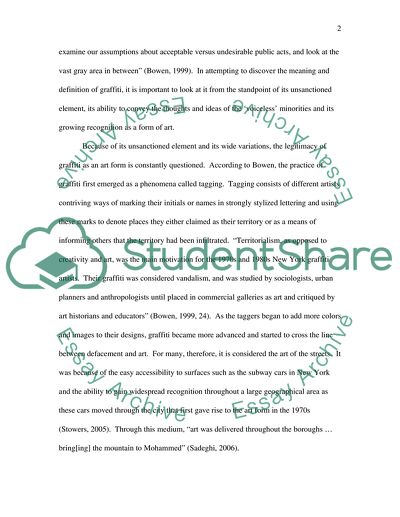Cite this document
(“Rethinking Graffiti Essay Example | Topics and Well Written Essays - 1000 words”, n.d.)
Rethinking Graffiti Essay Example | Topics and Well Written Essays - 1000 words. Retrieved from https://studentshare.org/visual-arts-film-studies/1559684-rethinking-graffiti-definition-essay
Rethinking Graffiti Essay Example | Topics and Well Written Essays - 1000 words. Retrieved from https://studentshare.org/visual-arts-film-studies/1559684-rethinking-graffiti-definition-essay
(Rethinking Graffiti Essay Example | Topics and Well Written Essays - 1000 Words)
Rethinking Graffiti Essay Example | Topics and Well Written Essays - 1000 Words. https://studentshare.org/visual-arts-film-studies/1559684-rethinking-graffiti-definition-essay.
Rethinking Graffiti Essay Example | Topics and Well Written Essays - 1000 Words. https://studentshare.org/visual-arts-film-studies/1559684-rethinking-graffiti-definition-essay.
“Rethinking Graffiti Essay Example | Topics and Well Written Essays - 1000 Words”, n.d. https://studentshare.org/visual-arts-film-studies/1559684-rethinking-graffiti-definition-essay.


